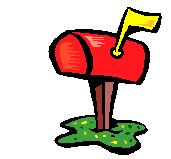CHAPTER 10
Green leafy Vegatables – an Essential Part of a Healthy dog’s Diet
Because dogs are omnivores, vegetables, particularly green leafy vegetables should from a substantial part of their diet. They are not essential however. Dogs can live and survive with-out such fare. There is only one problem. They will never be totally healthy. Their lives will be short, desease-ridden, and painful. In other words, vegetables are essential for a dog’s health. It is impossible for a dog to be totally healthy unless it spends a lifetime eating vegetables as a major part of it’s diet.
Looking at this from another perspective, while dogs connot live successfully on a meat only diet, all dogs will thrive on a properly constructed vegetarian diet. Not that I am trying to promote canine vegetarianism. I made this point because most people think of dogs as carnivores. That is, as non-vegetable eatting animals. Nothing could be further from the truth.
Dogs Have Always Eaten Vegetables
Vegetables have been an important part of a dog’s diet for a long time. Country people know this. As you drive along the roads in outback Australia, it is not uncommon to see dead kangaroos, the victims of road accidents. These are quickly eaten by the local dogs, foxes and dingoes.
The first parts which disappear are the stomach and intestines together with their contents of raw, finely crushed and groud-up vegetable material. This grass/vegetation eating by members of the dog family is obseved all over the world, wherever herbivores are consumed by members of the dog family.
- The obvious questions begging to be answered are… ‘’Why do dogs eat this material ? Why is it that dogs require vegetables, particularly the green leafy ones, to be completely healthy ?’’
The answer is very simple. Dogs need vegetables because they contain many important health promoting nutrients. There is on nutrient in particular that only vegetables can supply. Fibre. Dogs which do not eat vegetables will miss out completely on raw vegetable fibre, which has it’s own unique set of health promoting properties.
Fibre and Dogs
The fibre your dog obtains from raw vegetables includes both soluble and insoluble fibre. This fibre is quite different from the insoluble fibre derived from cooked grain, as found in commercial dog food. That insoluble fibre is much less valuable nutritionally.
The fibre found in raw vegetables is important in both preventing and treating certain diseases of the digestive tract. The so called ‘’fibre responsive’’ diseases. These include obesity, most of the diseases involving the lining of the intestines, diseases of the pancreas, plus other pancreatic problems such as sugar Diabetes and Pancreatitis.
These disease problems are rife in modern dogs fed vegetable free processed diets, or home produced diets consisting mostly of grains or meat, with little or no vegetable fibre. Not only that, I predict that in the next few years, many disease problems in dogs will be found to have as their basic initiating factor, a diet low in vegetable fibres.
Vegetables Don’t Only Supply Fibre
Vegatables supply many other nutrients. Many of those nutrients are the ones that have been found to be in short supply in the modern dog’s ‘’civilised’’ diet. This includes the difficult to obtain omega 3 essential fatty acids, most of a dog’s vitamin needs, masses of enzymes and various anti-ageing factors, including anti-oxidants.
Significant quatities of the omega 3 group of essential fatty acids are present in the vegetable material eaten by herbivores such as sheep, deer, cattle etc.. In due course this material is eaten by wild dogs directly from their prey’s intestines.
- As a result, wild dogs receive the omaga 3 group of fatty acids in abundance. Our mordern dogs do not. The result is skin problems, growth problems, reproductive problems and problems of degeneration.
Green leafy vegetables also contain most of a dog’s vitamin needs. The only one they lack completely is vitamin B12. In addition, they are low in thiamin and choline. Apart from that they supply most members of the B group, that is, B2 (riboflavin), B3 (niacin), B5 (pantothenic acid), B6 (pyridoxine), Biotin and Folacin in abundance. They also supply abundant quantities of vitamin C, vitamin A, vitamin E, vitamin K and carotenoids.
- It is hardly surprising that dogs which do not eat properly prepared vegetables, but are maintained on cooked and processed foods, suffer so many vitamin deficiency problems. Not classical deficiency diseases, but grouwth, reproductive, degenerative and immune system diseases.
The carotenoids in vegetables are on of the anti-oxidant or anti-ageing nutrients. In that role they are known to be extremely beneficial in the prevention and possibly the treatment of cancer. In addition, they are known to play a valuable role in the female aspects of reproduction.
One of this group, Beta carotene, also knowne as pro-vitamin A is converted into vitamin A in your dog’s intestines, and then absorved. This results in a vegetable-eating dog receiving a much greater amount of vitamin A that a dog fed cooked and processed food only. Vitamin A is essential in every process in your dog’s body.
- The vitamins A, E, C and K are all derived from green leafy vegetables. They are all anti-oxidant vitamins playing essential roles in growth, reproduction, disease prevention and the prevention of degeneration and ageing.
Dogs in the wild receive considerable amounts of vitamin C in their diet because of their vegetable eating habits. This is in stark contrast to the dog fed processed foods, which receives no vitamin C in the diet at all. Vitamin C is the anti-stress, pro-immune system vitamin.
- By now it should be obvious that dogs on cooked and processed foods are receiving food which is extremely poor in nutritional value by comparison to a diet rich in green leafy vegetables.
Processed Foods Have Very Little Useful Vegetable Matter
- The only vegetable material supplied in large amounts by processed dog food is overcooked grain.
This is a food the dog does not require. The vegetable material a dog requires in large amounts, green leafy vegetation, is completely missing.
Processed foods which claim to have vegetables in them have a token amount of vegetable material only. They usually have the addition of a green dye to make the product look as through it is chock full of vegetables. Unfortunately, masses of people actually believe the dog food companies. They believe that over-cooked grain, strained green with dye is doing their dogs good. Such is the power of advertising !
These comments apply equally to all the so called ‘’natural’’ dog foods springing up on supermarket shelves. They too are not different to any other precessed dog food, or possibly worse if their manufacturer includes the green dye.
- Naturally the poor dogs eating such rubbish are never completely healthy. They lack energy, are anaemic, and have problems with growth, reproduction, disease resistance, and ultimately degenerate into a premature, sick old age.
- The addition of green feed to such a diet would make an incredible difference. Breeders, puppy owners and the owners of elderly dogs should note this point particularly.
Vegetables Confer Long Life and Health
Modern feeding trials demonstrate that you can deprive your dog of meat and it can still be very healthy, but rarely can you get away with NOT feeding vegetables. Your dog has evolved throught countless generations to require a large proportion of it’s diet to be vegetable matter, particularly the green leafy type.
In other words, if you want your dog to be healthy, long lived and active into old age it is absolutely vital that you feed it raw vegetables. Ideally you should start feeding vegetables when it is a puppy.
However, unless the vegetables are properly prepared…..
Much Vegetable Feeding is a Waste of Time
Many folk do feed vegetable to their dogs. In most cases it is a waste of time. This is because when modern dogs are fed vegetables, those vegetables are usually cooked, and if fed raw, they are presented to the dog in large impossible to digest chunks.
Cooked Vegetables and Your Dog’s Health
- Your dog can digest cooked vegetables, but the process of cooking causes them to lose many of their vitamins, enzymes, anti-oxidants etc…
For example. The loss of enzymes through cooking leaves your poor dog with a double loss. Firstly, your dog’s ffod has lost the self digesting power of it’s enzymes. This puts an incredible strain on your dog’s pancreas. It is a lifetime of cooked food, enzymeless, commercial dog food type, that produces much of the Diabetes and other pancreas related problems.
Secondly, there are no enzymes to be assimilited into the bloodstream whole. The food has lost a major anti-ageing nutrient.
There is also the loss of the water soluble vitamis and minerals tossed out in the cooking water. Other vitamins such as vitamin B1 and vitamin C are destroyed by the heat of cooking.
Another loss is caused by the effect of excessive heat on the proteins which become denatured, or combines into useless compounds with carbohydrates.
It is also highly probable that cooking destroys many health giving properties of raw fibre.
- In other words, cooking your dog’s vegetables may make it possible for your dog to get a small amount of energy, protein and a few vitamins from them, but in the cooking process, the greater bulk of the health conferring nutrients have been lost or destroyed.
Can Dogs Digest Raw Vegetables ?
Unfortunately, most folk who feed raw vegetables to their dog, feed a product which passes through undigested, making it even more useless then cooked vegetables.
This is because is fed in large chunks. It has not been broken up and crushed. Even grated vegetables are not of much value to dogs. In other words, if you are going to feed raw vegetables to your dog, for any value et all to be obtained from them, they must be properly prepared. That is, totally crushed !
When a herbivore such as a sheep, goat or kangaroo eats grass or any other vegetable material, they chew it into tiny pieces and they cruch it. It is only when the vegetation has been ‘’processed’’ (dare I use the word)….in this way, that it is suitable fare for a wild dog.
- Similarly, unless the modern dog owner physically crushed and breaks down the raw vegetable materials fed to modern dogs, those poor animals simply cannot digest them. Not only that, for a dog, they are rarely appetising in ‘’chunky’’ form.
Why is crushing the vegetables so important ? The answer lies in a bit of elementary high school biology. You will remember that plants, like animals are composed of millions upon millions of cells. The major difference is, plant cells are each surrounded by a cellulose cell wall.
YOUR DOG CANNOT DIGEST CELLULOSE. That means, when you feed lumps of raw carrot or celery, or broccoli, or any type of vegetable to your dog, as so many people do, 99% of that vegetable material, even if it is very finely grated, is unvailable to your dog. It cannot be digested, and most of it is passes straight through, completely unchanged !
- To become available for your dog to use, the contents of each and every cell has to be released from the cellulose cell wall that surrounds it. That means every cell has to be crushed and split open.
Cooking achieves this effect, but at a very high price in terms of lost nutrition. The much preferred way is to physically break the vegetables down without heat as happens in nature when herbivores eat their food.
Your Dog’s Raw Veggies Should Resemble the Contents of Sheep’s Intestines !
In other words modern dog owners need to mimic that natural process I have just described. Grating is no good because there is no cruching. A food processor does it reasonably well, if you keep it going for long enough, but the most satisfactory way to do it is to put the vegetable material through a juicer.
- You may feed your dog the pulp only and drink the juice yourself, or mix some of the juice back in. People who own (and use) juicers, are learning not to throw the pulp away. Feed that pulp to the dog !
- Another excellent way to crush your vegetables, is to pass them through an old facshioned meat mincer.
Whichever way you do it, the end result is a raw food, a vegetable pulp that your dog easily digests for brilliant, healthy nutrition. This pulp contains fibre, water, minerals (including calcium), enzymes, vitamins, carbohydrates, anti-oxidants, and some proteins and essential fatty acids.
Many clients with bush or farm experience, comment that the texture of this vegetable pulp is similar to the gut contents of sheep, cattle, kangaroos etc… This is important. Texture, or mouth feel is very important in inducing dogs to eat.
How do You Use It ?
You may feed it to your animal as is. I like to add things to it.
Recipe
- E.g. one of the vegetable oils such as soyabean or safflower oil for energy and more essential fatty acids and anti-oxidants (vitamin E).
- Some brewer’s yeast for more B vitamins, including B1 or thiamin, high class protein, selenium, and glucose tolerance factor.
- Some KELP for iodine.. which is deficiant in Australian soils.
- A raw egg yolk for extra protein, for choline and more essential fatty acids.
- Some apple cider vinegar, for its acidity and other healthful properties.
- Some yogurt for the healthy bacteria it contains together with compounds called ‘’pro-biotics’’ – which promote your dog’s health. Pro-biotics can be thought of as acting like natural antibiotics.
WARNING : Do not store this vegetable pulp. It must be fed fresh. It quickly goes off (becomes ixidised), and loses much of it’s nutritional value.
What Vegetables Can be Used This Way ?
Present your dog with whatever vegetables are in season. Spinach, broccoli, pumpkin, cabbage, brussel sprouts, cauliflower, green lettuce leaves, red or green peppers, chives, sweet patato, carrots, celery, parsnip, peas, beans… whatever. They are all highly nutritious. Hte greater the variety the better. You do not even have to spend money. You can buy all the off-cuts from the green grocers, the stuff in the boxes out the back… the stuff they are glad to get rid of for nothing… and feed that to the dogs… suitably processed of course… RECYCLING WASTE … PAR EXCELLENCE !
- Note : do not give your dog’s excessive amount of the cabbage family – raw. Large amounts of cabbages, cauliflowers, broccoli and brussel sprouts etc. over a long period, can depress the functioning of the thyroid gland. Similarly, beans and peas should only be fed raw in limited amounts.
I ofter read or I am told that dogs should not eat raw potatoes. However, many of my clients report their dogs thriving on raw patatoes (suitably crushed), as a regular part of their diet.
- Note that green patatoes are poisonous, to both humans and dogs.
In other words for healthy dogs, all vegetables are fine, with the exceptions I have mentioned, so long as they are properly prepared.
Getting Your Dog to Eat Vegetables
I have not yet found a dog that did not like vegetables when prepared in this manner. Sometines they needed a bit of hunger as motivation to get them started, but mostly not. It is a very natural, normal food for them, particularly when they are started on it as puppies.
- Always remember that for a dog, the best motivating factor known is hunger.
Several days without food will stimulate a dog’s appetite for anything, including vegetables. Particularly if they are prepared correctly. This method is particularly important when you are trying to tempt an over-indulged, obese canine to sample healthier fare.
Many clients over the years have told me in some amazement how their dogs love to eat vegetables. However, most dog owners who have never offered their dog vegetables assume i would be very reluctant to eat them.
In the case of you over-fed, addicted-to-cooked-food dog, I suspect they would be right. Most pampered pooches living in the suburbs would not voluntarily eat vegetables without a motivating factor.
- That is why it is so important to get dogs eating properly from when they are puppies.
However, given the appropriate motivation factors, mainly hunger, practically any dog will grow to love a wide variety of vegetables. You may have to start off with the vegetables lightly steamed. Over a period of time, reduce the proportion of steamed vegetables, so that eventually all of the vegetables are presented as the raw vegetable pulp/mush.
- Note, do not bi in a hurry. Make all changes slowly. Sudden changes in diet will sometimes result in upset bowels, colic wind and diarrhea.
Another very effective motivating factor… for the owner, is when their dog contracts one or more of the degenerative diseases, particularly arthritis. I am always amazed and pleased as people gladly adopt this raw vegetable based diet for their sick dog. The reason they do, is because their beloved pet has been given an agonising death sentence.
It is usually not very long before I see happy clients with a happier, more alive dog. Vegetable based diets work well in alleviating degenerative diseases !
- The bottom line on vegetables, it that your dog needs them, they are best fed raw, and for maximum value to your dog in a nutritional sence, they must be TOTALLY CRUSHED to release their contents. The easiest way to do this it to put them through a juicer and feed the pulp… and as much or as little of the juice as you like.




